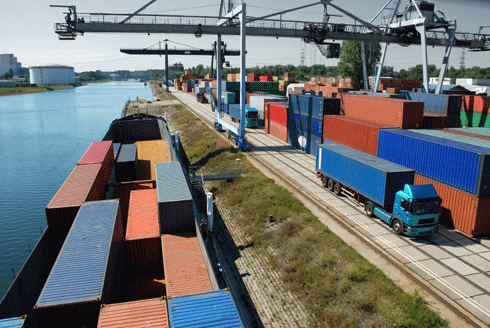
|
Published: 22 September 2014
‘Low-car diet’ could save trillions of $$$ and megatons of CO2
A global 40 per cent cut in urban passenger transport emissions would save more than US$100 trillion in cumulative public and private spending, and eliminate 1700 megatons of annual carbon dioxide (CO2) emissions by 2050, according to a new report. Instead, more people would use public transport, walking and cycling.

|
|
Around 1.4 million early deaths associated with transport pollution could be avoided annually if national leaders committed to a global policy roadmap of strong vehicle pollution controls. Credit:
Cyclotourist under CC BY-NC 2.0
|
The US-based report was carried out by researchers at the University of California, Davis (UC Davis) Institution of Transportation Studies and the Institute for Transportation and Development Policy (ITDP).
The authors say an estimated 1.4 million early deaths could be avoided annually by 2050 if governments mandate the strongest vehicle pollution controls and ultralow-sulfur fuels.
‘Transportation, driven by rapid growth in car use, has been the fastest growing source of CO2 in the world, says Michael Replogle, an ITDP co-author.
‘An affordable, but largely overlooked, way to cut that pollution is to give people clean options to use public transportation, walking and cycling, expanding mobility options especially for the poor and curbing air pollution from traffic.’
The report’s authors calculated CO2 emissions in 2050 under two scenarios: business-as-usual, and a ‘high-shift’ scenario. In the latter, governments would significantly increase rail and clean bus transport, especially Bus Rapid Transit (BRT), and help urban areas provide infrastructure to ensure safe walking, bicycling and other active forms of transportation.
The projections also include moving investments away from road construction, parking garages and other ways that encourage car ownership.
Under the high-shift scenario, not only would CO2 emissions plummet, but the net financial impact of this shift would be an enormous savings over the next 35 years, covering construction, operating, vehicle and fuel-related costs. Further, mass transit access is projected to more than triple for the lowest income groups and more than double for the second lowest groups. The overall mobility evens out between income groups, providing those more impoverished with better access to employment and services that can improve their family livelihoods.
‘Unmanaged growth in motor vehicle use threatens to exacerbate growing income inequality and environmental ills, while more sustainable transport delivers access for all, reducing these ills,’ noted Replogle.
‘This report's findings should help support wider agreement on climate policy, where costs and equity of the cleanup burden between rich and poor are key issues.’
Exposure to vehicle tailpipe emissions is associated with increased risk of early death from cardiopulmonary disease and lung cancer, as well as respiratory infections in children. Car and diesel exhaust also increases the risk of non-fatal health outcomes, including asthma and cardiovascular disease.
The International Council on Clean Transportation (ICCT) has evaluated the impacts of urban travel by cars, motorcycles, trucks and buses on the number of early deaths from exposure to soot emitted directly from vehicle tailpipes.
‘Future growth in vehicle activity could produce a four-fold increase in associated early deaths by 2050, even with a global shift to mass transit,’ said ICCT's Joshua Miller, a contributor to the transport emissions study.
‘We could avoid about 1.4 million early deaths annually if national leaders committed to a global policy roadmap that requires the strongest vehicle pollution controls and ultralow-sulfur fuels.’ He says cleaner buses alone would account for 20 per cent of these benefits.
Source: UC Davis



